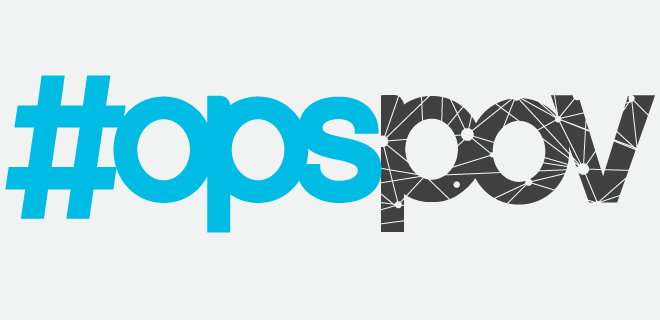
Long weekends updating inventory for a massive bookstore during my college years helpd me realize that scanning Universal Product Codes made a painful process much more tolerable. In fact, I refused to let my mind wander and consider what a tedious practice inventory management was like before UPCs and handheld scanners – those seemed like dark days not worth revisiting.
These ugly, ubiquitous labels revolutionized shipping, commerce and much more through providing standards for data collection and measurement. The incredible impact of these codes is not lost on Harold Geller, Chief Growth Officer at Ad-ID, when he calls Ad-ID the UPC code for advertising creative.
“UPC was invented as a way to track sales; UPC is now used to help target promotional materials, manage metadata elements to support loyalty programs, and aid manufacturers in determining what products to bring to market,” he says. “When you have standardized metadata to input into a predictive model, you end up with a better model and more accurate findings.”
In our little slice of ad tech, we get pretty occupied tracking users – particularly since the HTTP cookie is losing relevance faster than we can harness the power of software/device IDs (e.g., Apple’s IDFA, Google ID and probabilistic IDs). But as creative increasingly slithers into the industry spotlight – to be discussed at our Pubs Tackle Creative Meetup on Wednesday – it brings along another tracking conundrum.
Consider the mess of creative assets out there, continually being cut, flipped dynamic, enhanced with interactive elements and/or transcoded into units spread out across every conceivable platform. Tracking and gauging creative performance and effect requires a depressingly manual amount of work. Just ensuring the correct (or same) asset is being measured is a headache in itself.
Which is where Ad-ID steps in – in such a complex technological landscape, Geller argues a central registration authority is needed to aid in tracking ads throughout the ecosystem and the exchange of consistent metadata. That is, specific IDs for creative assets; for example, every TV spot would have its own “UPC code” that would stay the same (along with the embedded metadata) when transcoded for desktop, OTT or mobile video.
“You want to create the nuanced creative for online, OTT and mobile, but you don’t know how to attribute the potential lift from the flat TV commercials to the interactive spots because you’re not connecting the ads to each other,” Geller says.
In addition, Ad-ID features a hierarchal structure that will enable easy tracing and tracking of modified ads – say a 15-second cut of a television commercial embedded in a banner. It creates checks and balances in that tech providers and publishers must seek related Ad-IDs for any variations on assets created.
“It takes a lot of the randomness out of the creative customization process,” Geller comments.
Ad-ID adoption had a big coup this spring, when the Screen Actor’s Guild-American Federation of Television and Radio Artists (SAG-AFTRA) announced that all commercials produced for television, radio and digital platforms that featured union members would have to use Ad-ID as their sole commercial media identifier. That clip with SAG Award Winner Matthew McConaughey cruising around in a Lincoln? Got an Ad-ID. Geller suggests the SAG-AFTRA deal covers 70%-90% of video ads and 30% of audio.
“It’s providing us with a requirement, which is great,” Geller says. “But even without that, full Ad-ID adoption on its own offers a number of advantages.”
Indeed – it’s claimed that the proliferation of Ad-ID will save advertisers and agencies anywhere from $1 billion to $3 billion through efficiencies gained in advertising workflow.
The SAG-AFTRA mandate has spurred adoption in a serious way – the list of companies using Ad-ID has grown significantly since the April announcement. Currently in the midst of conversations involving integrating Ad-ID into a wealth of commercial distribution companies (e.g., Extreme Reach, Yangaroo, Ad Genie) digital asset management platforms and various other companies that use advertiser metadata. One major integration has been Adobe Creative Cloud, the first to enable the embedding of metadata in just about every format in the digital ecosystem.
What’s a Pub Gotta Do With It?
For publishers, understanding the creative identifier situation can seem quite burdensome, especially when they’re knee-deep in inventory forecasting and data management. But the business of creative is becoming more prominent on the supply side – no longer can pubs simply complain that it’s late or fails QA. If they’re not building site-integrated creative for advertisers, they’re performing transcoding for video. They’re working with vendors that can quickly chop assets into a variety of formats designed for their properties.
Ad-ID doesn’t cost media a dime. It’s the buy-side that pays for the Ad-ID codes. For publishers, it dramatically improves their ability to track creative performance and report back to advertisers and agencies – particularly for cross-channel publishers. No other identifications required.
“It’s not necessarily a new stream of data – publishers have been leveraging it for a long time in a non-standard manner,” Geller says. “These data elements will now be standardized by an authoritative source as Ad-ID metadata is registered by the creative agency. “
Geller and crew made a big push toward pubs at the IAB’s Ad Ops Summit to incite further digital adoption – basically by encouraging publishers to demand the use of Ad-IDs by the buy side. Considering they won’t be charged and they’ll be able to offer better cross-channel measurement, it’s hard to see the downside. During the conference, Geller demonstrated how Ad-ID XMP metadata is embedded into a file and shared a link for the demo. In addition, work has begun on integrating Ad-ID into the next version of the VAST video standard.
“The biggest thing I hear from advertisers and agencies that don’t use Ad-ID is that while we’re offering interesting and progressive things, but the publishers aren’t asking for it,” Geller comments. “At least ask for it – or better, require it.”